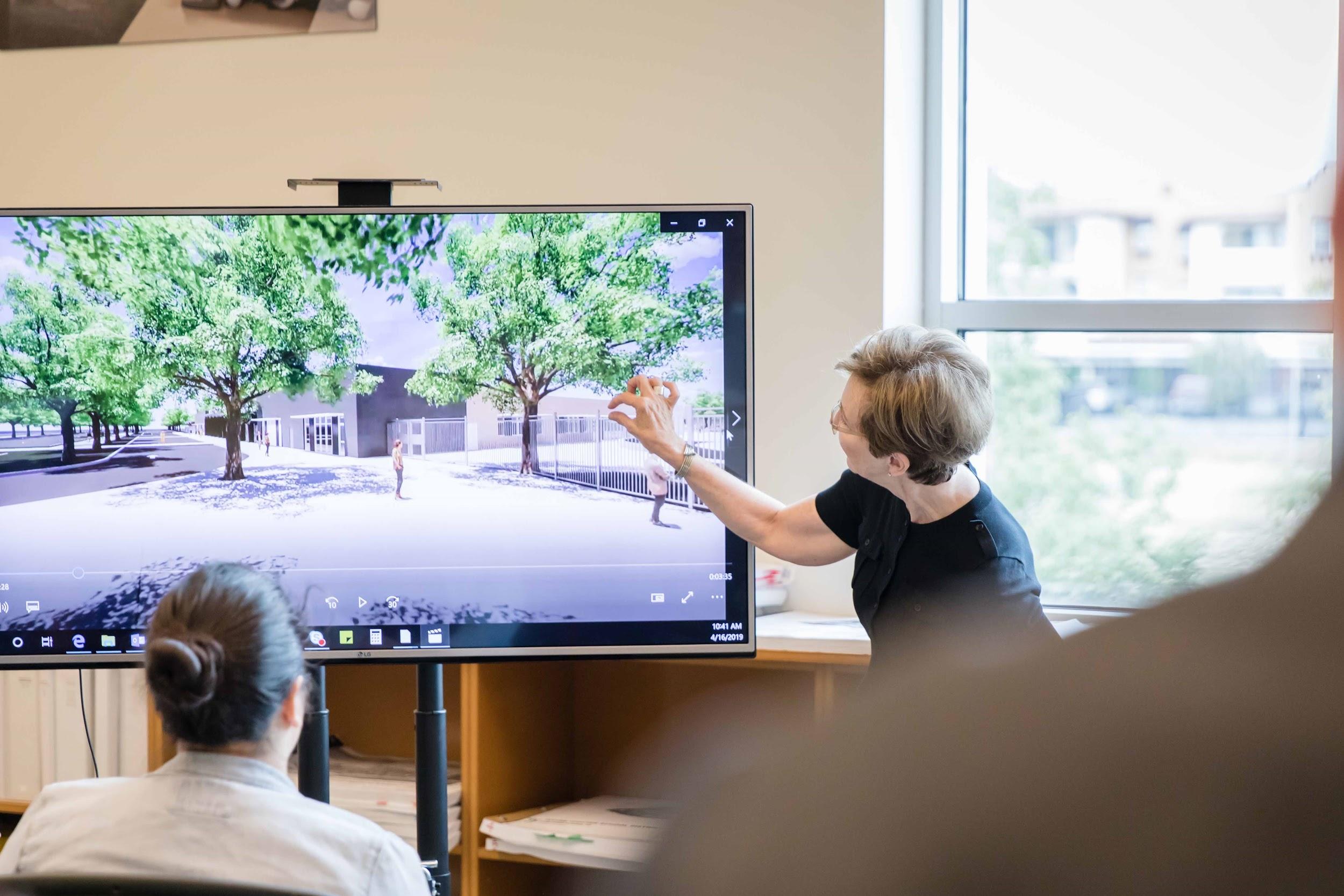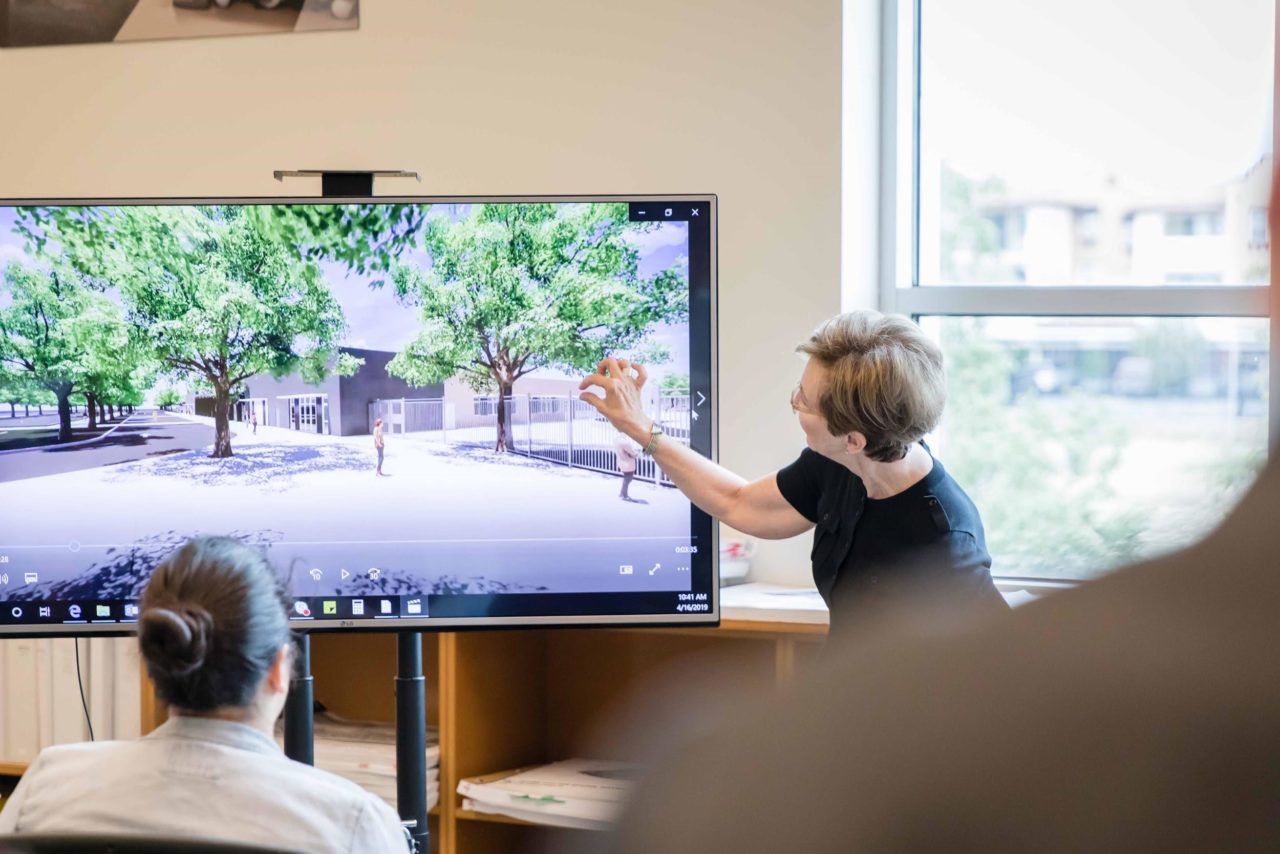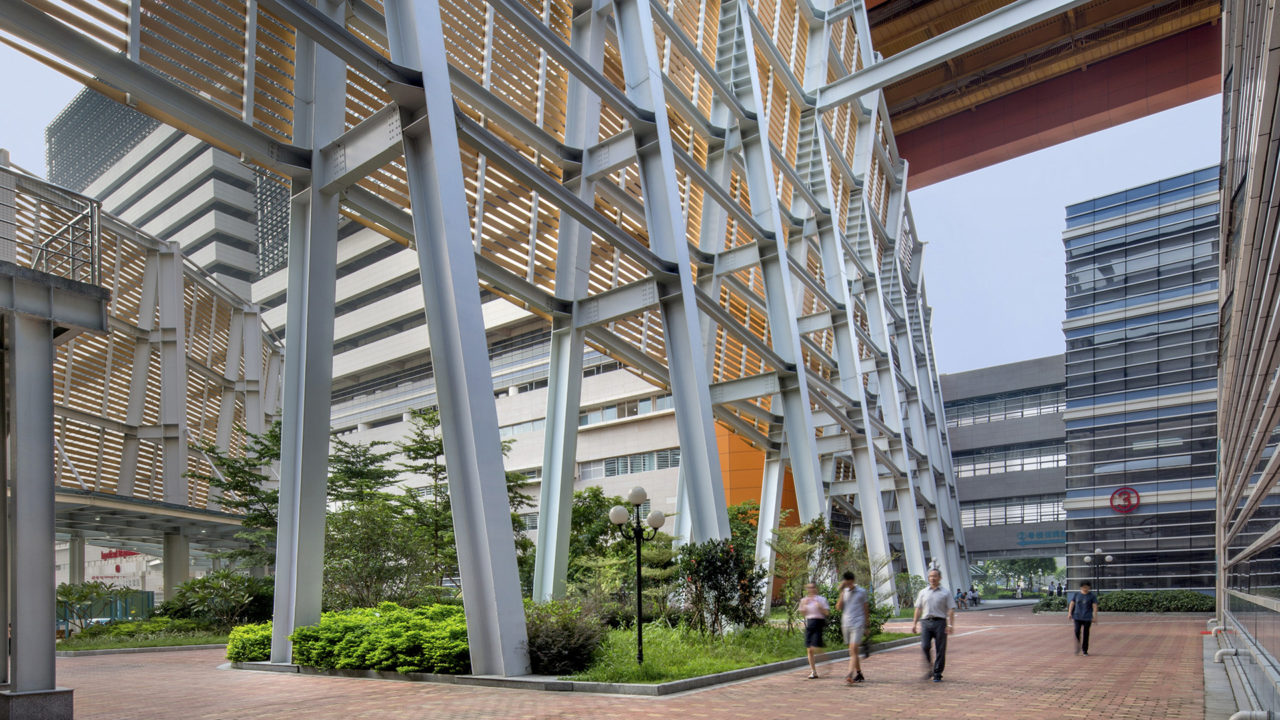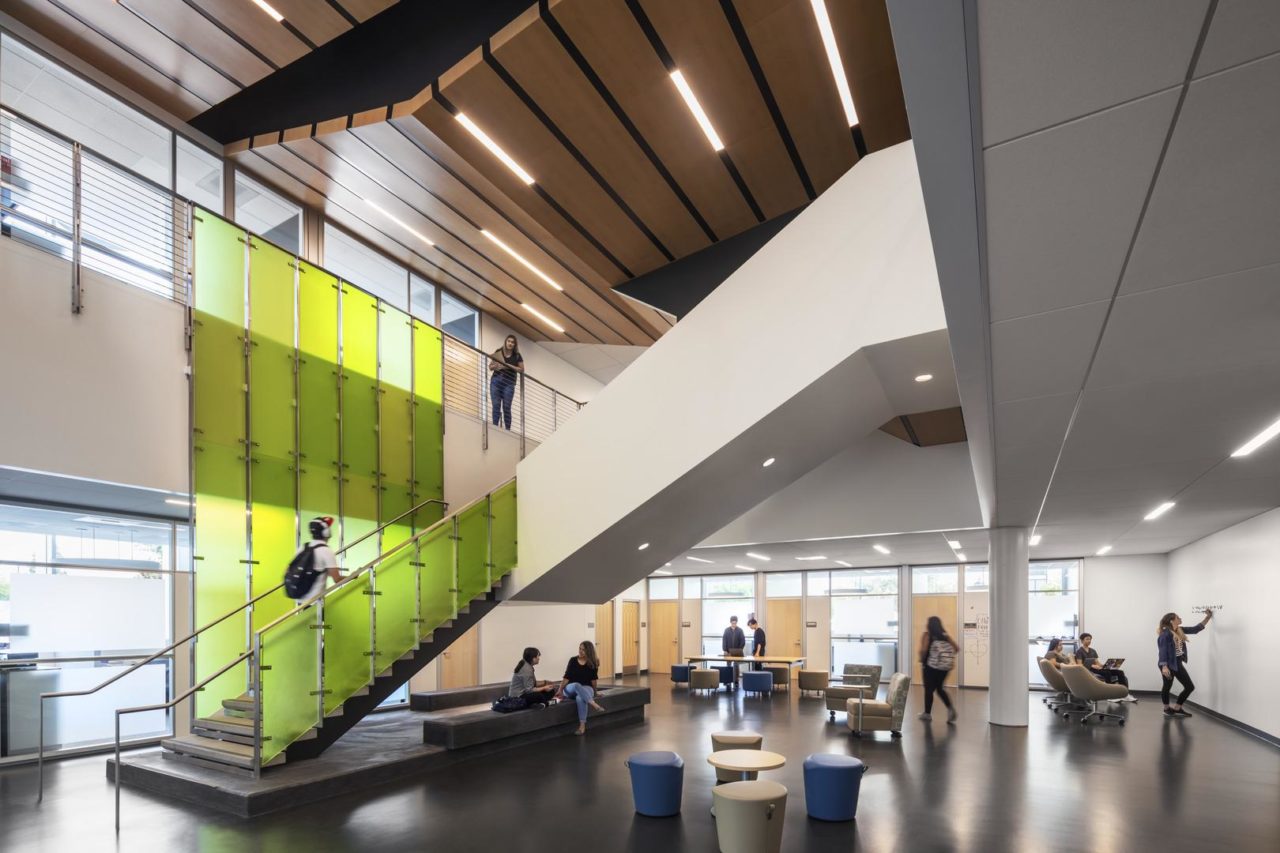Architects have always aimed to design buildings that reflect their core values and the society they live in, but in recent decades, the architectural industry has made especially big strides in designing buildings that further important goals. We’re seeing significant growth in modern architecture, from the advent of new technologies to sustainable (and even regenerative) designs. Today’s buildings are more welcoming, adaptable, environmentally friendly, and technologically advanced than ever.
What Is Modern Architecture?
There’s no simple definition for modern architecture. Technically, any building that’s constructed today could be classified as modern. The term “modern” can also refer to a specific architectural movement that was popularized in the 1950s. This style, also known as mid-century modern, is characterized by clean, simple designs, open floor plans, and a connection to nature.
Modern architecture, however, doesn’t just refer to structures built within the last few years. At HMC Architects, we define modern architecture as relevant architecture—that is, buildings that make a statement. The growth of modern architecture is represented by the rise of thoughtful design. Buildings are meant to give back to the community in some way or serve the greater good with a clear purpose. No building is purely utilitarian or decorative. Today’s architects work to design buildings that improve communities, the environment, and the people who use the space. However, this industry transformation didn’t happen overnight. Here are some of the most notable changes we’ve seen in modern architecture over the past few decades.

Trends in the Growth of Modern Architecture
A connection to nature and biophilic design are as important today as it was when notable 1950s mid-century architects like Frank Lloyd Wright designed buildings. Like Wright, many modern architects also favor the organic, clean, open-plan interiors that defined this bygone era of architecture.
Despite these similarities, today’s architects aren’t attempting to copy or revive architectural movements of the past.
Instead, they’re borrowing certain elements from historical architecture to inform present trends. This process isn’t new; throughout the centuries, architects have taken inspiration from previous design movements to create something fresh and modern.
In the case of today’s modern architecture, architects have expanded and improved on some of the concepts used by architects before them. These are some noteworthy trends that have contributed to the growth of modern architecture:
Open, Flexible Spaces
While open-plan concepts have been popular for a while, the open-plan designs of the 2020s are a bit more strategic. As urban areas become denser and buildings like hospitals, offices, schools, and civic centers grow more crowded, space is at a premium. Open plans help these spaces feel less crowded.
However, today’s architects also appreciate the need for private spaces and the way those spaces can make people using a facility feel more comfortable. Every building should offer a balanced mix of public and private spaces. For example, rather than installing cubicles in an office, architects might choose instead to design a more flexible workspace. This would involve considering details like:
- Touchdown spaces to socialize and relax during breaks
- Private, quiet areas where people can work without outside distractions
- Flexible furniture that people can rearrange based on their needs
- Daylighting to bring the outside in and prevent people from feeling enclosed in the space
Biophilic and Regenerative Design
We’re also seeing a greater focus on truly environmentally connected buildings. Modern buildings often have:
- Large windows and skylights that let the daylight in and reduce reliance on electricity during the day
- Building shapes that mimic nature, such as curved hills, wave patterns, or wooden canopies that resemble trees
- Natural materials like wood or stone and paint colors in earth tones
- Landscaping, outdoor seating areas, and walking paths
However, with the development of modern technologies, architects have taken these biophilic elements one step further by designing sustainable buildings with a zero net energy footprint. Many architects are even prioritizing designs that are regenerative, meaning that they are fully self-sustaining and give back to the community and environment. As a result of these trends, a love of nature can be displayed not only through a building’s appearance, but also, more importantly, through its operations.
New Technologies
As we touched on above, technology has had a significant impact on the growth of modern architecture. Design elements like charging stations, outlets, interactive monitors, and self-service kiosks in buildings are increasingly valuable and important ways to cater to end-users.
Technology is even changing the way that architects design buildings. We’re seeing the following technologies being used throughout the design process:
- Computer-aided design (CAD) software
- Virtual reality (VR) and augmented reality (AR) tools
- Building Information Modeling (BIM)
- Drones
- Prefabricated materials and automated tooling
Architects that embrace these modern technologies help drive the industry forward. Talented new architects already using this technology are helping to shape our industry for the better. When architects embrace new technology and trends, modern architecture becomes more efficient and better able to cater to users’ needs.

What Does the Future Hold for Modern Architecture?
Where can modern architecture go from here? The answer lies with architectural students who will soon have a greater voice in this industry. Nurturing the next generation of talented architects is essential if the industry is to continue the incredible growth it has had over the past few decades, particularly when it comes to sustainability and technology.
The Future of Sustainability
One major shift we’re seeing in modern architecture is a move away from sustainable buildings and toward regenerative buildings. Clients are looking for buildings that reduce or eliminate their reliance on the power grid in order to lessen their negative impact on the environment and save on costs over time. Architects on the cutting edge are finding innovative ways to design buildings that don’t produce a carbon footprint.
The Future of Technology
Technology is playing an ever-greater role in the architectural design and construction process. For example, in the very recent past, architects had to present their ideas to clients almost exclusively using blueprints. Now, we can use VR technology to give clients a full walkthrough of a planned building. Other types of technology, like automated BIM software, can handle many of the complex calculations architects used to have to perform by hand. Even logistics are becoming more streamlined with better technology. Automated tooling, prefabricated materials, and modular construction make it faster and simpler to construct a design on-site.
In the near future, we’ll also see architects use “digital twins” in buildings like hospitals, schools, or civic centers. Digital twins are three-dimensional digital models that track a building’s data to help clients manage the building more efficiently. A digital twin can track data such as light usage in each room, how often the AC is used, and how much foot traffic each area receives at different times of the day. This gives clients more control over every aspect of the building post-construction.
How Architects Can Prepare for the Future
Technology like this isn’t just a pipe dream or a temporary phenomenon. Architects need to start thinking about these trends now if they want to drive the growth of modern architecture in the coming decades. However, no matter what new technology is introduced or how automated the design process becomes, there will always be a need for passionate architects to lead the industry. Some of the most powerful and affecting architecture in history was inspired by an architect’s strong emotional connection with a design. Technology can help us turn our dreams into a reality, but it is up to future architects to lead the charge.
As we bring up the next generation of architects, the importance of passion and strong ethical principles in the design process cannot be understated. Even as the decades wear on and trends change, these two qualities will always have a place in modern architecture.
HMC Architects proudly fosters the growth of modern architecture. We offer comprehensive mentorship programs to architectural students and new hires and are dedicated to ongoing learning. Our diverse staff supports a culture of curiosity and education so we can continue to lead the architectural industry in the right direction. If you’re interested in joining our team, contact HMC Architects today. Or, if you’d like to learn more about our core design principles, you can also email President and CEO Brian Staton directly.




